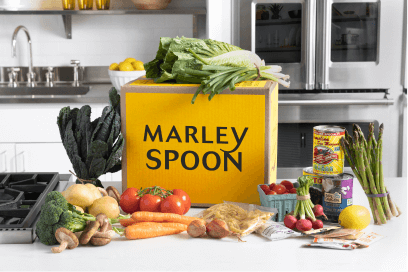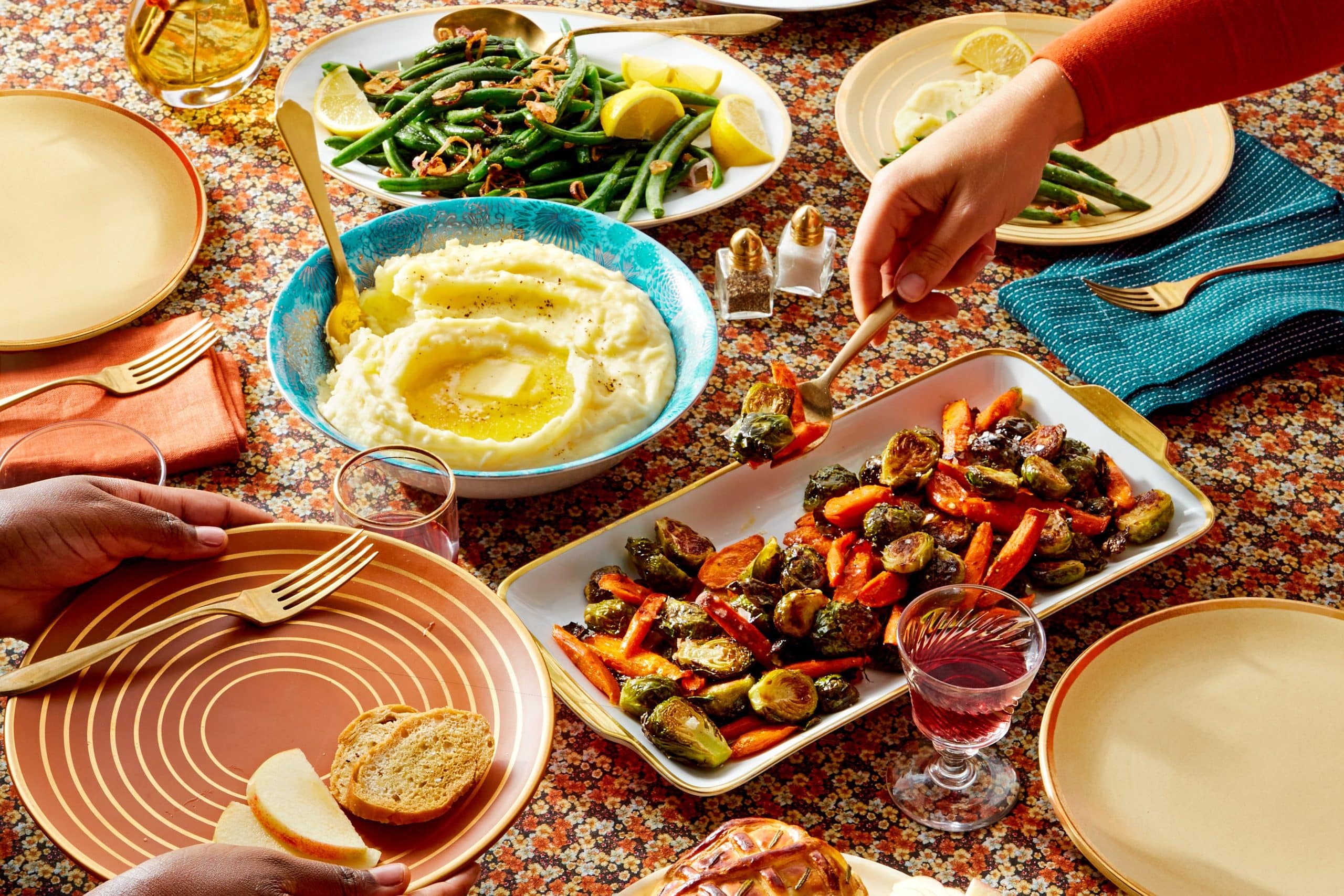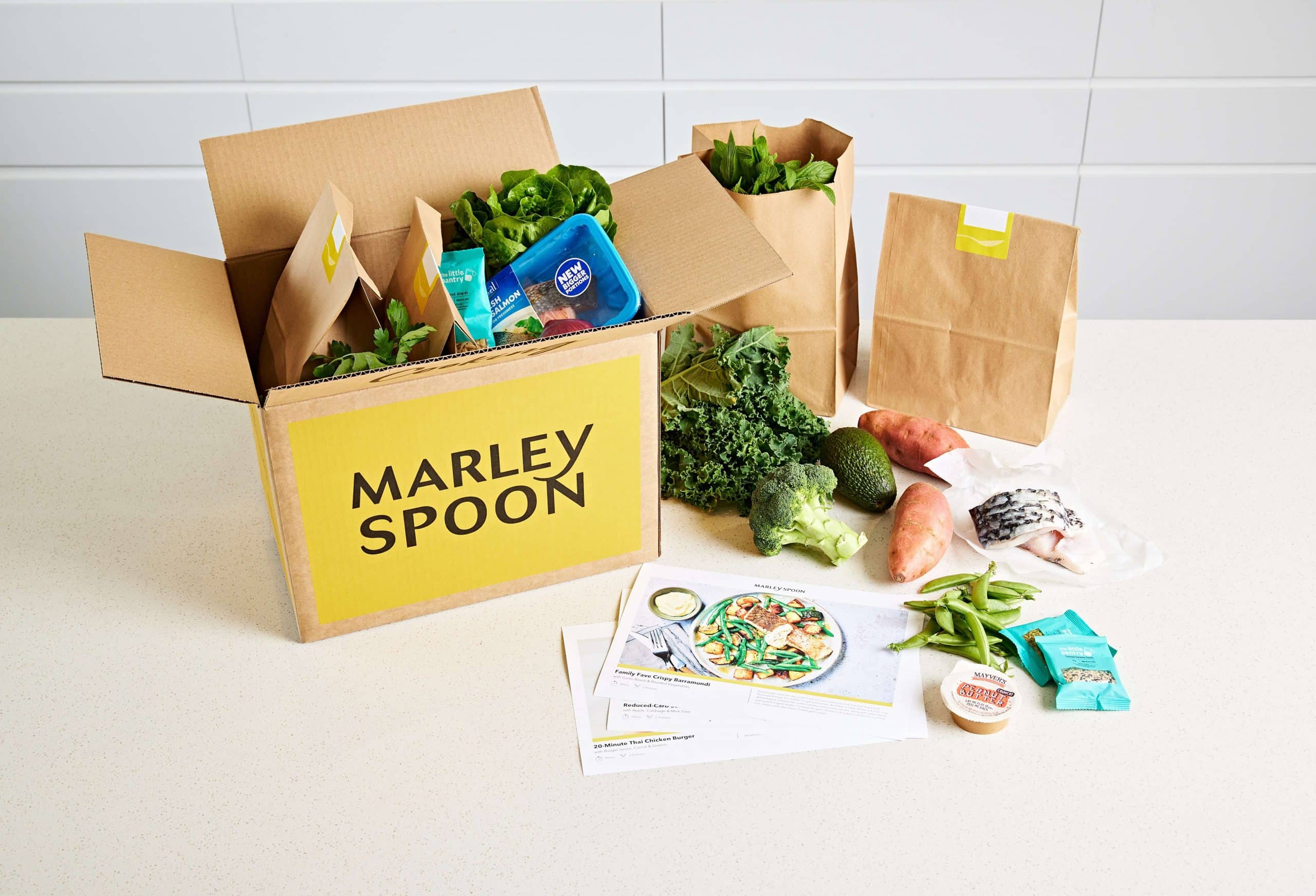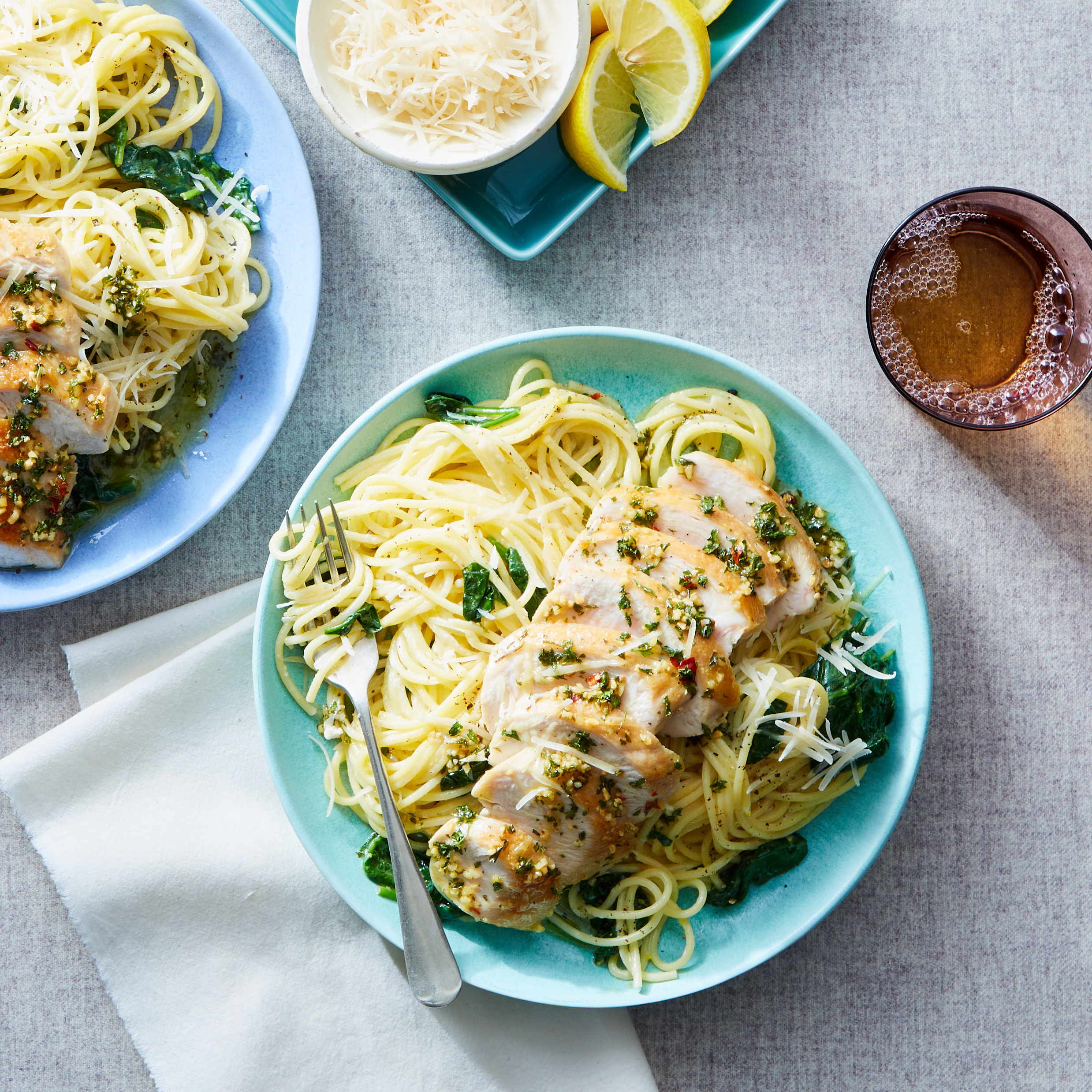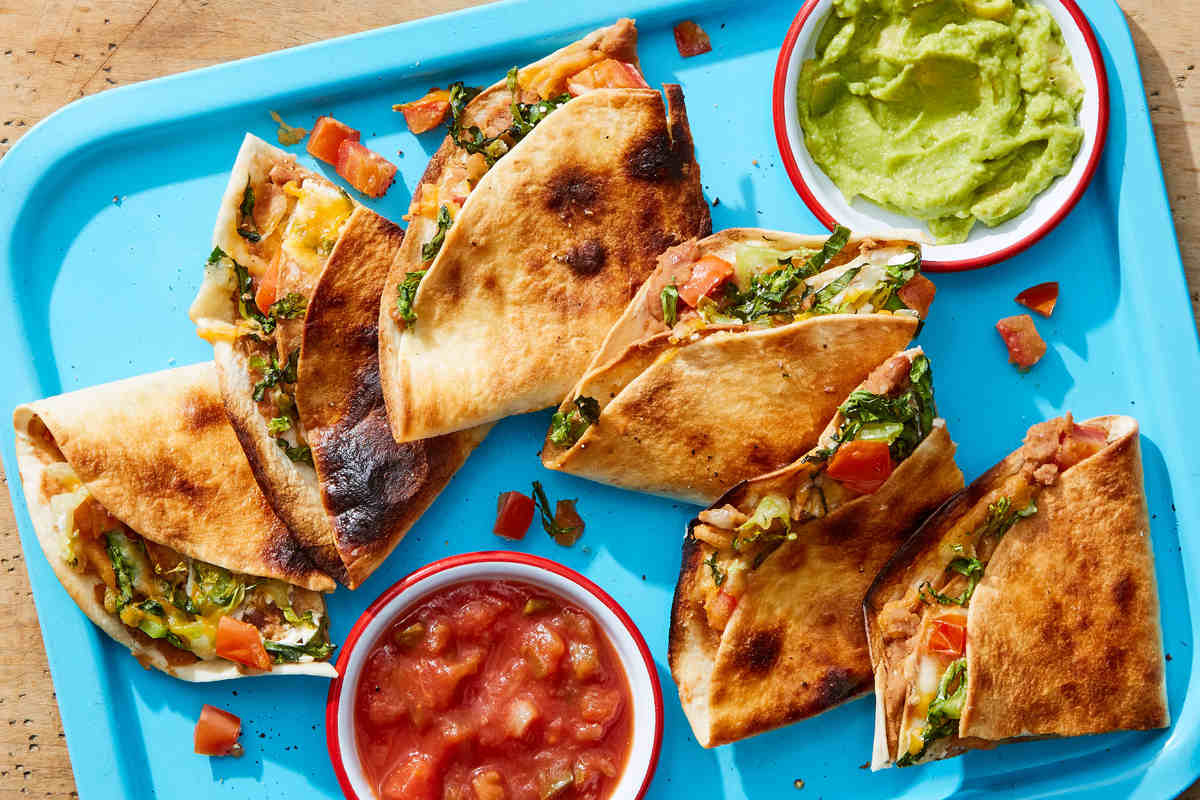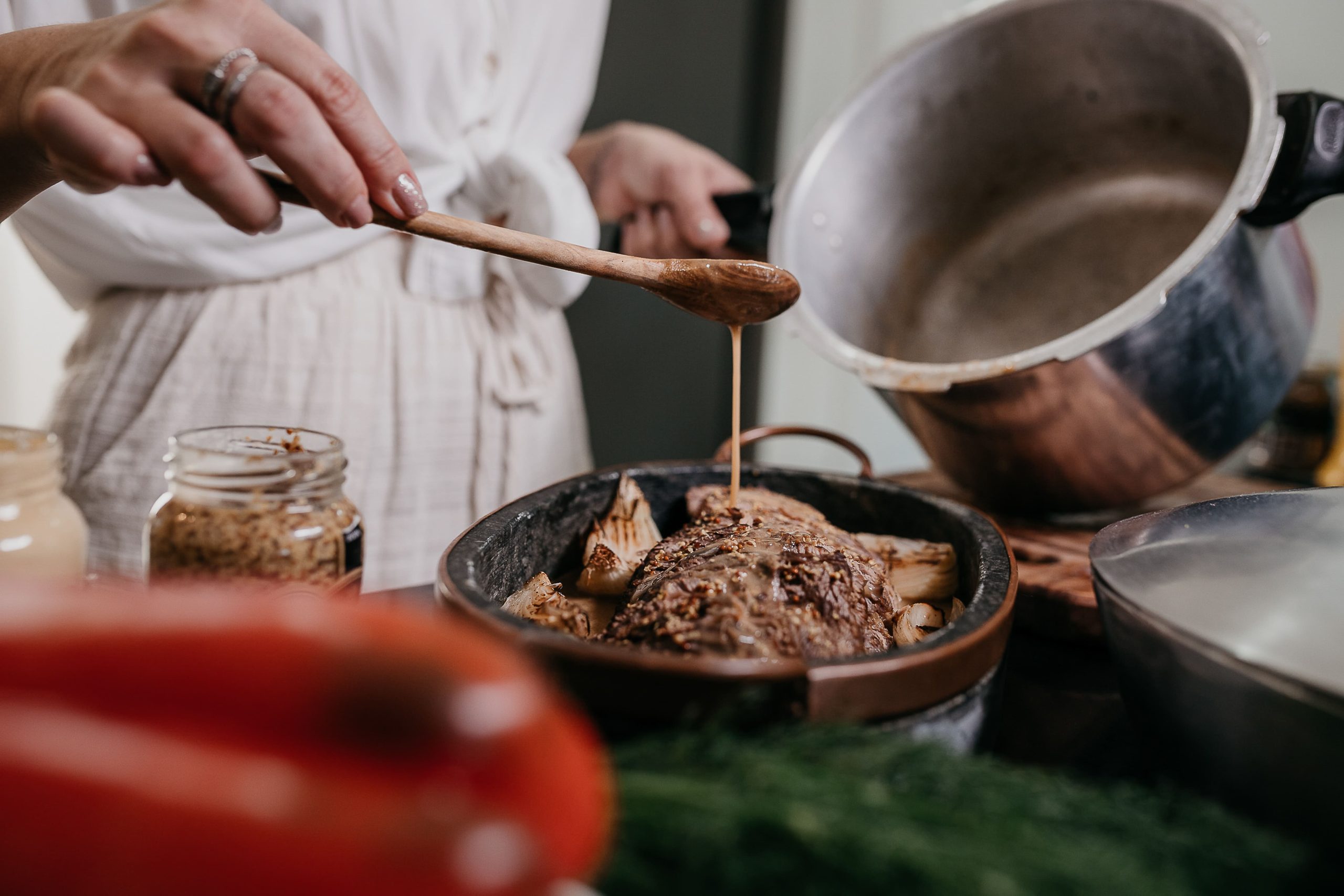There are few things better than a perfectly cooked steak or juicy chicken breast; however, cooking proteins correctly every time requires skill and practice. But don’t let that scare you. Becoming proficient at browning, butterflying, and shallow frying is a breeze when you stick to Martha Stewart’s satisfying and straightforward recipes.
Browning Proteins
A properly cooked steak doesn’t need much beyond a bit of seasoning and heat to be delicious, but have you wondered why that is? It’s called the Maillard reaction, and it’s defined as how the flavors, aromas, and color of your food develop. Browning is another word to describe this chemical reaction.
You’ve probably heard browning applied to ground meat before, but this technique isn’t just for casseroles and ragu sauces. Browning helps remove excess fat and lock-in flavors so that you get a crisp and tasty brown crust on all kinds of proteins.
Steakhouse Dinner with Cottage Fries:
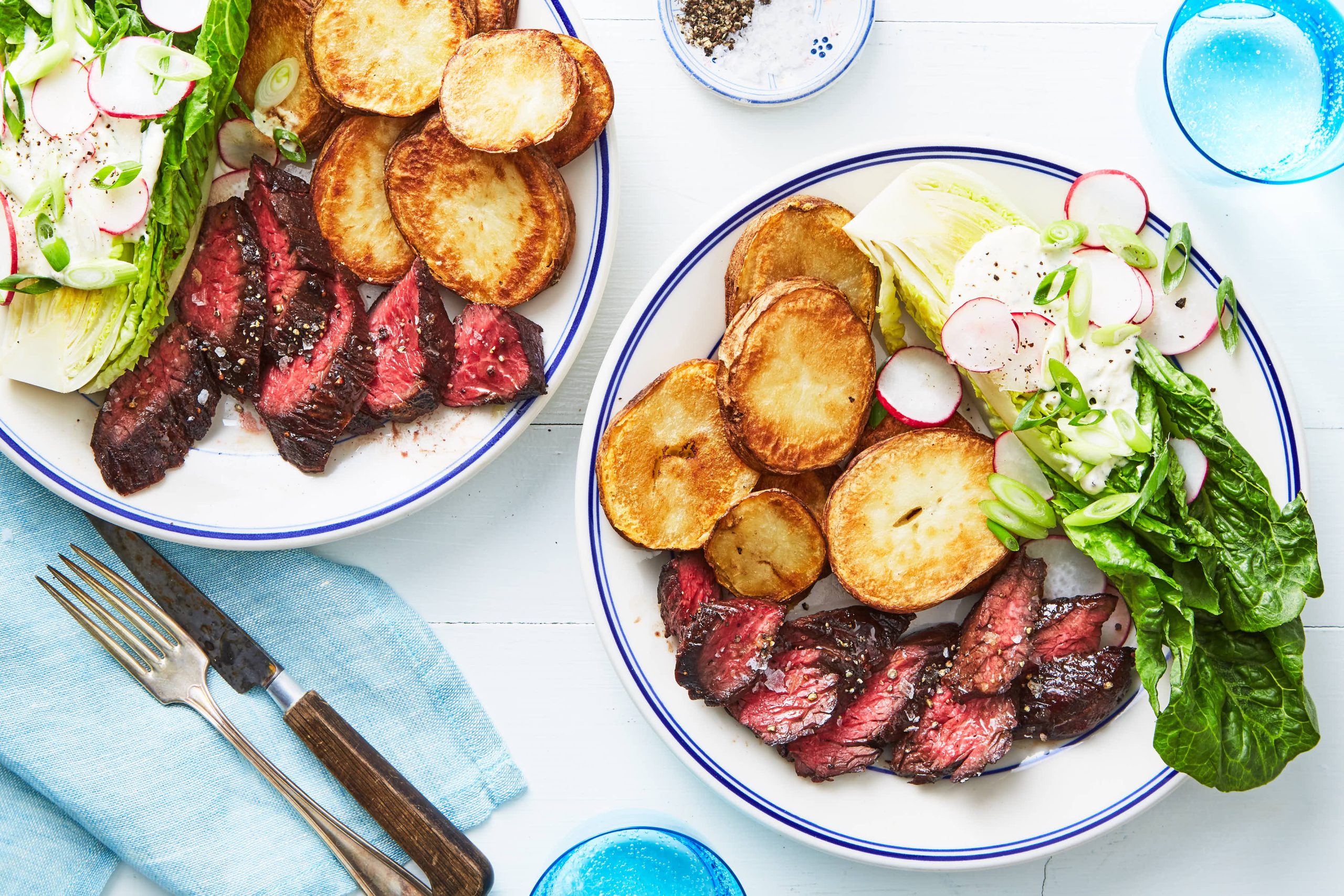
You and your partner will feel like celebrities when you sit down to this upscale steakhouse dinner. These tender beef medallions look and taste as if they belong at a black-tie dinner. Pair them with oven-baked potato crisps and a light romaine and radish salad for an added dash of elegance.
To get that perfect, caramelized crunch on the outside of the meat, you’ll need three things: high heat, Worcestershire sauce, and a heavy pan like a cast-iron skillet. This searing technique also locks in juices.
Brown the meat by cooking it on medium-high for 3-4 minutes per side. Add Worcestershire sauce to the pan or skillet and cook until the steaks glaze and liquid has nearly evaporated (about 1 minute more). Remember to let your meat rest 5 minutes before serving.
Check out the full recipe for further details about preparing those delicious vegetables.
The Butterfly Effect
What does it mean to butterfly meat? The answer is not just aesthetic. Butterflied meat cooks faster and more evenly because it allows the entire surface of the protein to lie on the hot grill or pan and makes a thick cut of meat thin.
Not only does butterflying reduce the time it takes to cook your meat, but it also creates a larger surface area for even more flavor and texture.
This cozy dish features a butterflied pork tenderloin alongside a medley of maple roasted sweet potatoes and Brussels sprouts. An apple pan sauce seasoned with mustard seed and thyme ties all the component pieces together.
To prep the pork:
- Preheat oven to 500℉ with racks in lower and upper thirds.
- Pat pork dry, then cut each piece of pork lengthwise, stopping halfway through.
- Open the meat like a book and place each “page” between sheets of plastic wrap.
- Using a meat mallet or heavy skillet, pound the tenderloin to an even ¼-inch thickness.
Here is the full recipe with instructions for two other kitchen fundamentals: glazing and pan sauces.
The Do’s and Don’ts of Pan-Frying
Many beginner chefs are intimidated by deep-frying, but fried food doesn’t have to be scary or complicated. Shallow frying, or pan-frying, will give you that crunchy, golden crust without the fuss and heavy equipment. All you need is a heavy kitchen pan and cooking oil with a high smoke point like peanut, avocado, or sunflower oil.
Hot Honey-Butter Chicken on Biscuits:
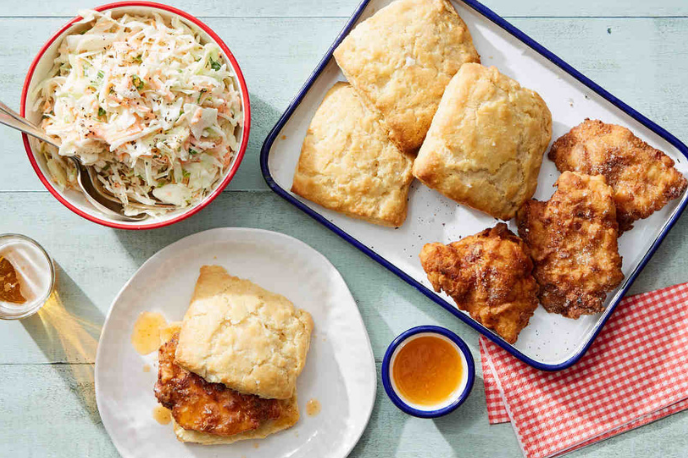
We have to warn you; this recipe may ruin fried chicken for you forever. Why? Because it’s just that good! Everything about this dish—from the tart, vinegar brine to the spicy honey butter sauce—is an experience for the senses. But today, we are focused on the crust and empowering you to give shallow frying a try.
DO:
- Use hot (and we mean HOT) oil. The high heat creates an immediate seal around your protein, preventing it from getting too oily. You’ll hear the sizzle when your meat hits the pan if the oil has reached the right temperature, so cut off a test chunk before you start cooking.
- Add enough oil to cover the base of the pan. For these chicken and biscuits, you’ll need to fill your pan about ¼ of an inch deep.
DON’T:
- Heat your oil too quickly. Bring the oil up to temperature on medium heat to avoid any unhappy incidents in the kitchen.
- Over-crowd your pan or leave it unattended. You’ll want to turn the chicken breasts occasionally until they are fully cooked and golden brown all over.
Explore the full recipe for the complete guide to making Martha’s hallmark biscuits.
How do you feel? Ready to start cooking? Stay tuned for more ways to continue cooking with confidence with Martha Stewart and try our additional menu offerings in this month-long series, including 12 unique and exciting culinary adventures.
